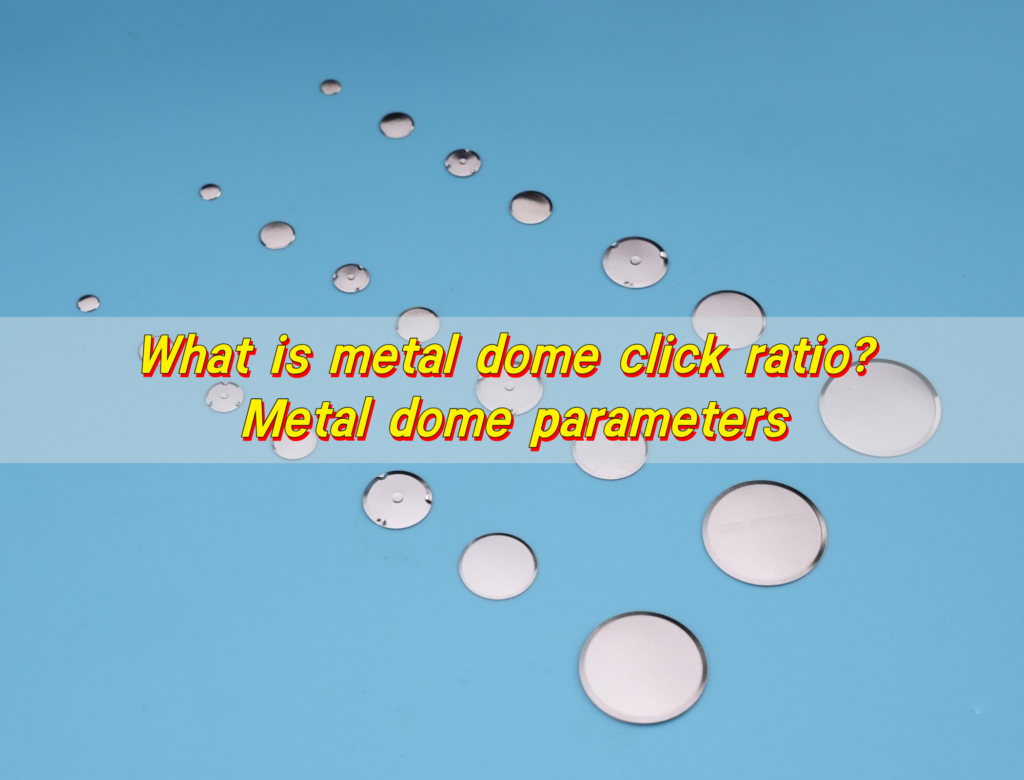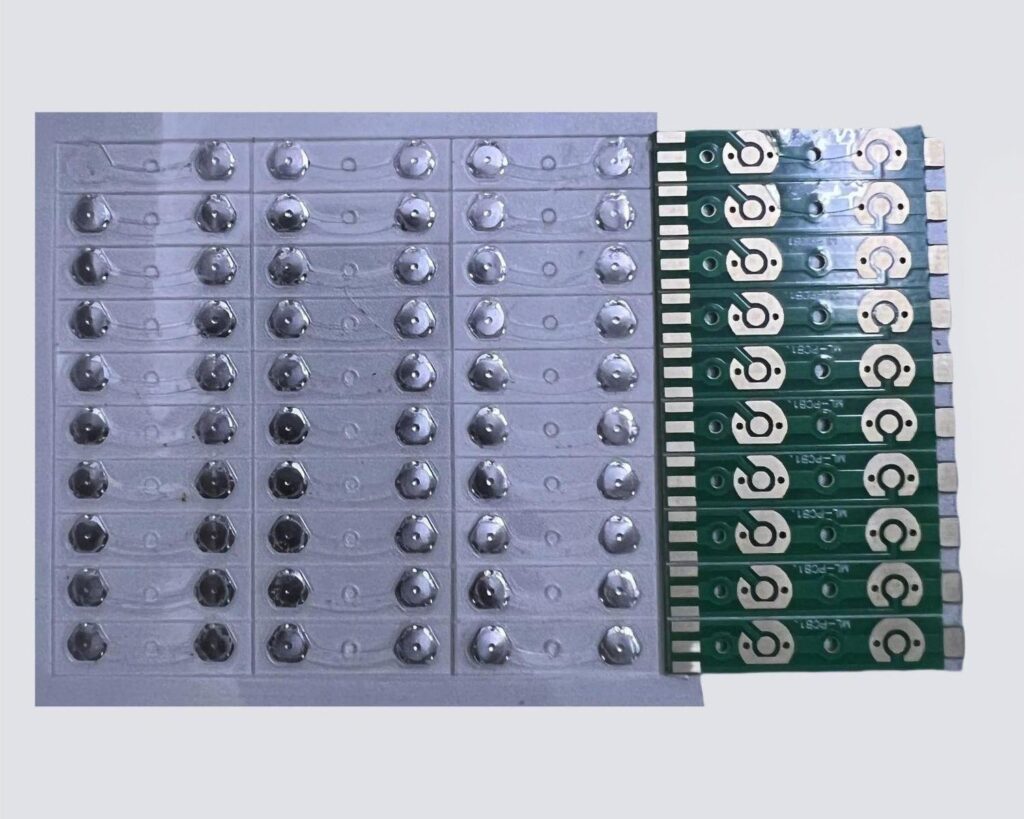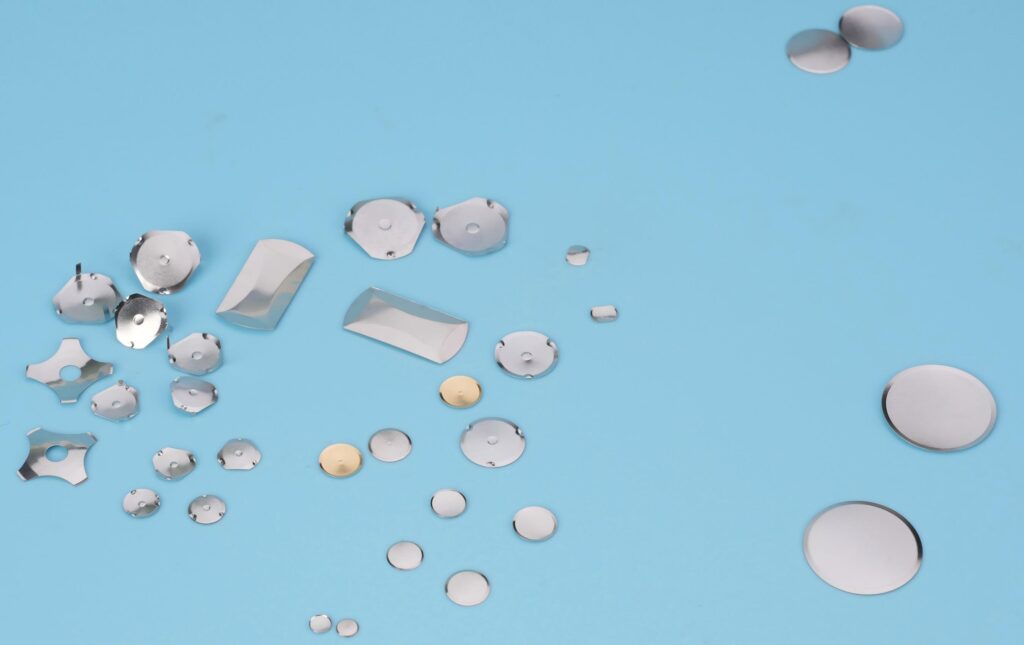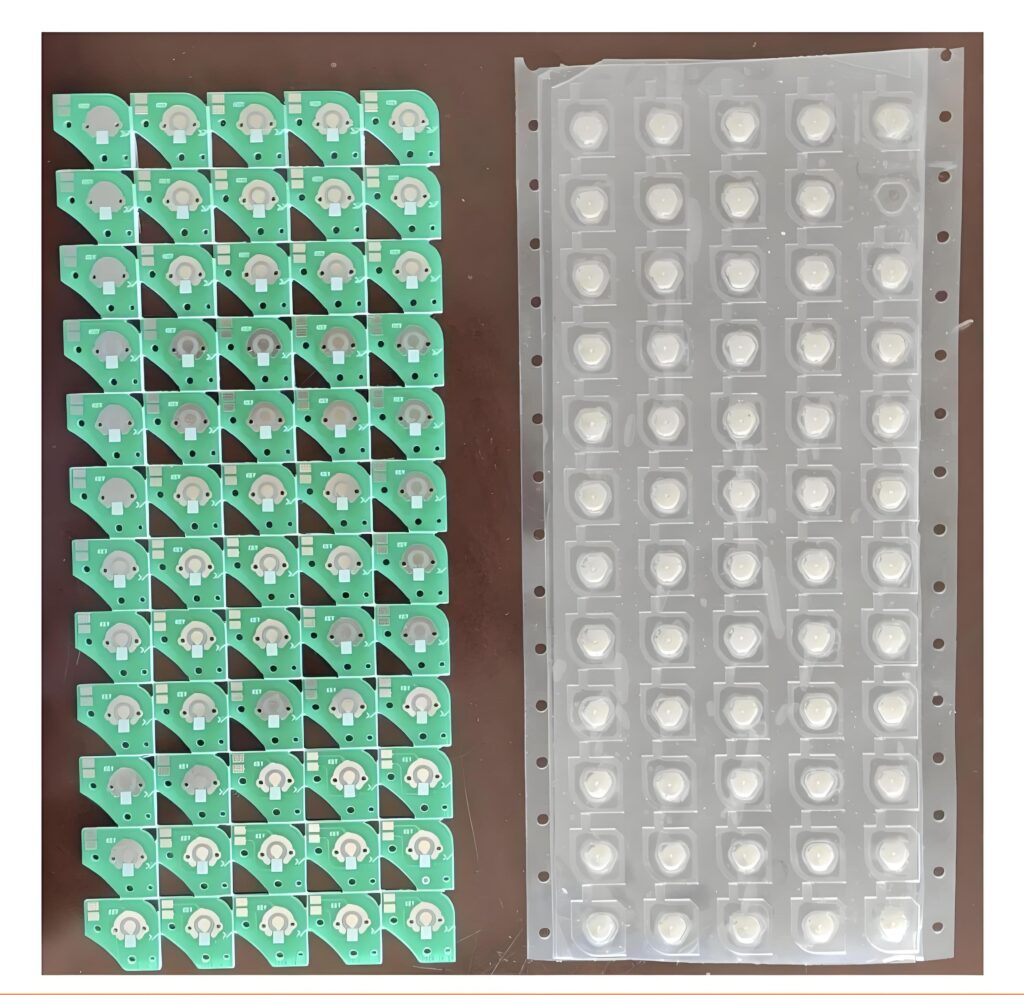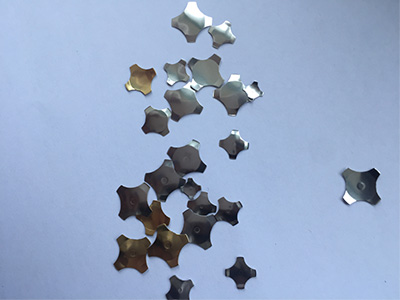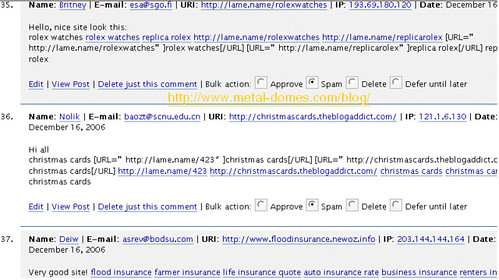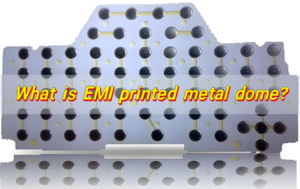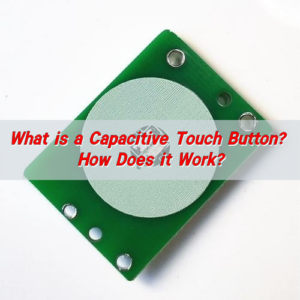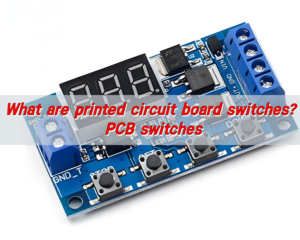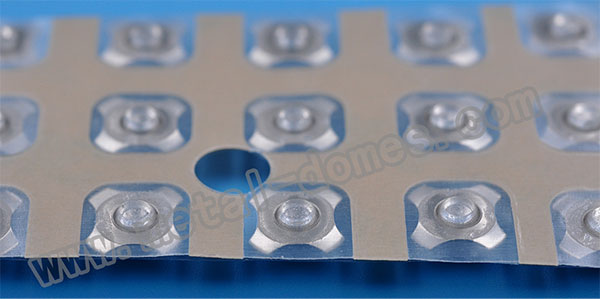The click rate of the metal dome usually refers to the force feedback ratio when pressing the key (Click Ratio), which is an important indicator for measuring the feel and feedback of the key. The parameters of the metal dome mainly include the key life (up to 1 million times, with a change rate of less than 30%), the shape of the dome (circular, oval, triangular, cross, etc.), the travel of the dome (0.13~0.22mm), the dimensional tolerance (±0.05~0.15mm) and the environmental adaptability.
What is the click ratio for metal dome?
The click ratio, often called click rate, is a key performance indicator of a metal dome’s tactile feedback. It’s a measurement that tells you how strong the “snap” feels when you press the dome.
Technically, the click ratio is the percentage drop in force when a dome transitions from the peak force (before it collapses) to the return force (after it collapses and begins to rebound).
A higher ratio means a more dramatic and noticeable click. A lower one gives a softer press, which might be preferred in silent or soft-touch applications.
In simple terms:
Click Ratio = [(Peak Force – Return Force) / Peak Force] Ă— 100%
Let’s say a dome has a peak force of 300g and a return force of 90g.
Click Ratio = [(300 – 90) / 300] Ă— 100 = 70%
That 70% indicates a sharp, clean tactile feel.
Metal dome with a click ratio of 50% or more is typically considered a tactile dome, which gives users clear physical feedback when pressed. Ratios below 40% usually feel too soft or mushy and may not deliver the same confident press.
How to calculate the click ratio of metal dome?
The calculation is straightforward but requires precision. You’ll need to use a force-travel measurement device or force-displacement curve tester. Here’s how it works:
- Measure the Peak Force – the highest point of resistance before the dome collapses.
- Measure the Return Force – the point at which the dome rebounds or stops collapsing.
Plug those values into the formula above.
This test is typically done under controlled lab conditions to ensure accuracy. Reliable manufacturers often include the click ratio in their product datasheets so you don’t need to test every time.
At Best Technology, our in-house testing system ensures every batch is checked for consistent click ratios, so you can trust what you get.
What are the basic parameters of metal dome?
To understand how click ratio fits into the bigger picture, we can look at the core parameters that define Metal Dome performance:
- Actuation Force (Peak Force): The pressure needed to collapse the dome. Ranges from 150g to 600g depending on design.
- Return Force: The rebound force after actuation. A key factor in calculating the click ratio.
- Click Ratio: The tactile sharpness of the dome.
- Dome Height and Diameter: These physical traits determine feel, travel distance, and compatibility with your assembly.
- Travel Distance: The distance a dome moves during a press. Shorter travel gives faster response; longer travel offers more pronounced feedback.
- Lifespan (Durability): The number of actuations a dome can endure. High-quality domes exceed 1 million cycles.
- Material Type: Stainless steel (commonly SUS301) is standard for strength, corrosion resistance, and consistency.
When these parameters align, you get a dome that not only feels right but performs reliably in the long run.
Do dome shapes change the click rate?
Yes, absolutely. Dome shape directly impacts how the force is distributed and how the dome collapses and rebounds.
- Round Domes: Best tactile feedback and highest click ratio. Common in handheld electronics.
- Triangle Domes: Balanced performance, excellent lifespan, moderate click.
- Four-leg Domes: Best for stability and durability, commonly used in medical and industrial devices.
If your application needs snappy, fast feedback, round domes are often the best choice. But if you prioritize stability and long life, go with triangle or four-leg domes. Our engineers at Best Technology can help you find the perfect match.
What are the factors that affect the click ratio of metal dome?
Now let’s dive deeper into what influences the click ratio:
- 1. Dome Shape and Structure
The shape plays a big role. Round domes, triangle domes, and four-leg domes all have different force profiles. A round dome usually offers a smoother curve and higher click ratio, while four-leg domes offer better balance and longevity.
- 2. Material Thickness and Quality
Thicker domes provide a higher actuation force and potentially a sharper click. But if it’s too thick, it may become stiff and reduce tactile sharpness.
- 3. Dome Size
Smaller domes often give crisper feedback but lower force. Larger domes can feel slower or less snappy, depending on the design.
- 4. Environmental Stress
Heat, moisture, and dust can affect the dome’s elasticity over time. That’s why reliable plating, cleanroom assembly, and protective dome arrays are vital.
- 5. Assembly Process
Improper mounting or misalignment during assembly may affect the tactile feel. That’s why dome arrays are preferred—they reduce misalignment and increase performance consistency.
How does force relate to click rate?
Force and click rate are tightly linked. The click ratio is calculated from force values, so how the dome behaves under pressure directly affects how it feels.
Higher Actuation Force often leads to a higher click ratio, but it also requires more user effort.
Lower Actuation Force might feel easier but may not deliver a satisfying click if the return force is too close to the peak.
Striking the right balance is key. We often recommend a click ratio between 55–75% for optimal tactile feel.
More importantly, the dome must match your user experience goals. A medical device might need a light, quiet dome. A rugged industrial controller might need a firm, decisive click.
Is a higher click rate always better?
Not always. While a higher click ratio offers a more tactile press, it doesn’t mean it’s the best for every application. Benefits of high click ratio domes:
- Crisp, confident tactile feel
- Reduced user error
- Clear signal feedback
But in some cases, a softer press is better. For instance:
- Medical equipment may need quieter keys.
- Touch-sensitive devices may prioritize smooth action.
- Some users prefer lower force to avoid fatigue.
In the end, the best click ratio is the one that feels right for your users. At Best Technology, we help you match your design with the perfect dome type.
How to test metal dome click ratio?
Testing the click ratio requires precision instrumentation. Here’s how professionals do it:
Place the dome on a force-travel test machine. Apply downward force until it actuates. Record the peak force and the return force. Use the formula to calculate click ratio.
Top testing machines provide a force-travel curve, which gives a visual readout of the dome’s behavior. This curve shows the press, snap, and return of the dome in a clean graph.
Best Technology performs this test on every batch. That ensures every dome meets the required parameters before shipping.
If you’re unsure, we provide free testing samples and a technical data sheet to guide your development process.
Conclusion:
Metal dome click ratio is a key measure of tactile feedback. It reflects how a dome feels when pressed and is calculated by comparing the peak and return force. Factors such as dome shape, size, material, and environment all affect it.
At Best Technology, we’ve spent years perfecting every curve, snap, and detail of our metal domes. Want help finding the perfect dome for your project? Reach out to us anytime at sales@metal-domes.com


